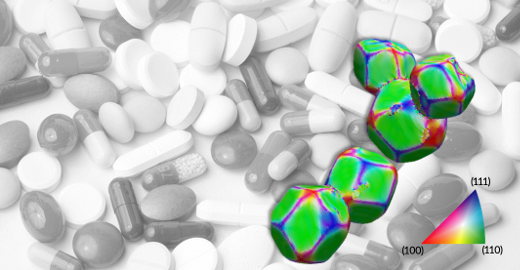
Multimodal 3D imaging assisted modelling of drug delivery
A fundamental understanding of the behaviour of a polycrystalline pharmaceutical is vital for control of its physicochemical and crystalline properties. These properties, in turn, have the potential to improve e.g. drug product development. Molecular modelling of the supramolecular arrangements responsible for crystal chemistry provides a route to design crystalline products. So far, traditional characterisation techniques such LOM and SEM have not been able to provide adequate experimental evidence for validation of the models.
As part of the UK national consortium INFORM2020: ‘Molecules to Manufacture’, researchers at University of Hertfordshire, The University of Manchester and University of Leeds have taken the advantages of advanced laboratory 3D X-ray microscopy to bridge drug product development and molecular modelling. This has been done using multimodal X-ray imaging combining high resolution absorption contrast tomography and LabDCT to unravel the crystallographic factors governing the morphology of pharmaceutical particles.
CrystEngComm
Crystallographic tomography and molecular modelling of structured organic polycrystalline powders
